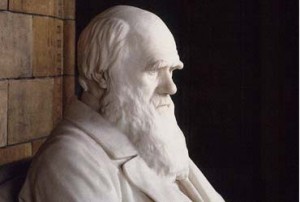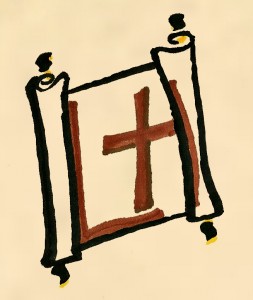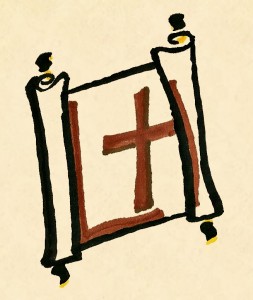The Bible Comprehension series will be an ongoing study of different books of the Bible. What is the Bible, and how do we know if it is fictional or nonfictional?
UNIQUE FEATURES OF THE REVELATION OF JESUS CHRIST
- It is the final book of the Bible.
- It is the only book of the Bible that states that the reader and believer of it will be blessed (Revelation 1:3, Revelation 22:7).
HISTORY
The book of Revelation (or Apokalupsis, Greek for “unveiling”) is the record of a vision that the Apostle John received on the Isle of Patmos circa A.D. 95. While the Old Testament described and foretold the events leading to the First Coming of Christ, the New Testament described Christ’s time on earth and foretells the events leading up to the Second Coming of Christ.
The Bible explains that there is a spiritual enemy who is known among other titles as “the god of this world” (2 Corinthians 4:4) and “the prince of the power of the air” (Ephesians 2:2) and was given legal right to oppress the present world when Adam and Eve committed treason (Genesis 3). This spiritual despot’s authority was devastated when Jesus Christ (Yeshua Messiah) fulfilled the highest level of reparation imaginable (John 19:30). As the revolution draws near to completion, Satan is permitted to use his last days of power to seek out for his own state all who do not want to be citizens of the kingdom established by Christ.
Not surprisingly, the devil does not relinquish his temporary power over the world easily. Thus, as time draws near to the Messiah’s return and consummation of power, the more hostile the atmosphere becomes because it means the adversary’s time limit is almost up. Jesus Christ compared it to sensing changing seasons of the year, but warned that no one knows the “day or hour” that the end of this world as we know it will come (Mark 13:29-37).
LITERARY STYLE
THE PRACTICAL APPLICATION OF “RIDDLES”
The symbolism of Revelation and other parts of Scripture may seem nonsensical until one is able to comprehend the physical (yes, even scientific) manifestation of signs. According to the Bible, the messages of Scripture are woven into the framework of the universe and are thus comprehensible by those who pay attention.
For a start, examine the heavens to behold a system so mathematically precise that you can fast forward and rewind an image of its motions with modern software.
“The heavens are telling the glory of GOD; And their expanse is declaring the work of His hands. Day to day pours forth speech, and night to night reveals knowledge. There is no speech, nor are there words; Their voice is not heard. Their line has gone out through all the earth, and their utterances to the end of the world.” (NASB)
~ Psalm 19:1-4
The actual Hebrew words in those sentences that are often translated as “declaring” or “telling” are çâphar (ספד) and nâgad (נגד). The meaning of çâphar is
“to score with a mark as a tally or record, i.e. (by impl.) to inscribe, and also to enumerate; intens. to recount, i.e. celebrate:-commune, (ac-) count, declare, number, + penknife, reckon, scribe, shew forth, speak, talk, tell (out), writer.” Strong’s Concordance.
Ah, doesn’t that sound astronomical?
The word çâphar is the same word used in Job 12:8, 28:27 (“Then He saw it and declared it; He established it and also searched it out”), 1 Chronicles 16:24, Psalm 78:6 (“That the generation to come might know, even the children yet to be born, that they may arise and tell them to their children…”) and many other verses.
The meaning of nâgad is
“to front, i.e. stand boldly out opposite; by impl. (causat.) to manifest; fig. to announce (always by word of mouth to one present); spec. to expose, predict, explain, praise:-bewray, x certainly, certify, declare (-ing), denounce, expound, x fully, messenger, plainly, profess, rehearse, report, shew (forth), speak, x surely, tell, utter.” Strong’s Concordance.
The word nâgad is used in Genesis 41:24 (when Pharaoh told Joseph about his dream, “I told it to my magicians, but there was no one who could explain it to me”), Esther 4:8, Job 31:37, Isaiah 3:9, 21:6, 41:22 (“Let them bring forth and declare to us what is going to take place; as for the former events, declare what they were, that we may consider them and know their outcome. Or announce what is coming…”), and many other passages.
Read Psalm 19 with this fuller understanding of the beautiful Hebrew words çâphar (ספד) and nâgad (נגד) and no longer does it simply mean that the starry sky is an impressive display to reflect GOD’s glory. The celestial bodies have been placed there with a mission to communicate and verify the entire saga of salvation.
“Then GOD said, ‘Let there be lights in the expanse of the heavens to separate the day from the night, and let them be for signs and for seasons and for days and years…'”
~ Genesis 1:14
The Hebrew word in that passage often translated as “signs” is ‘ôwth (אות), which means
“a signal (lit. or fig.), as a flag, beacon, monument, omen, prodigy, evidence, etc.:-mark. miracle, (en-)sign, token.” Strong’s Concordance
Remember that YAHWEH named the stars, not man (see Job 9 and Amos 8 ) – different cultures have told stories to go along with the stars, but they haven’t changed the names and their meanings.
Now, recall the great sign that appeared in heaven in Revelation 12 about the woman clothed with the sun; the moon at her feet and a crown of 12 stars on her head.
From the research website of Frederick A. Larson:
“The Jewish nation is composed of twelve ancient tribes. Jewish prophecy states that a particular tribe will bring forth the Messiah: the tribe of Judah. The symbol of Judah’s tribe is the lion. You can see these connections in an ancient prediction of Messiah’s coming found in the first book of the Bible, the Book of Genesis, Chapter 49:
9 You are a lion’s cub, O Judah; you return from the prey, my son. Like a lion he crouches and lies down, like a lioness– who dares to rouse him? 10 The sceptre will not depart from Judah, nor the ruler’s staff from between his feet, until he comes to whom it belongs and the obedience of the nations is his.
This association of Messiah with the tribe of Judah and with the lion is a productive clue. It clarifies the connection between Jupiter’s behavior and the Jewish nation, because the starry coronation—the triple conjunction—occurred within the constellation of Leo, The Lion. Ancient stargazers, particularly if they were interested in things Jewish, may well have concluded they were seeing signs of a Jewish king. But there is more.
The last book of the New Testament is, in part, a prophetic enigma. But a portion of the Book of Revelation provides clear and compelling guidance for our astronomical investigation. The apostle John wrote the book as an old man while in exile on the island of Patmos. Perhaps the austerity of this exile or a lack of companionship left him time to ponder the night sky. Whatever the reason, Revelation is full of star imagery. In Chapter 12, John describes a life and death drama played out in the sky: the birth of a king.
1 A great and wondrous sign appeared in heaven: a woman clothed with the sun, with the moon under her feet and a crown of twelve stars on her head. 2 She was pregnant and cried out in pain as she was about to give birth. 3 Then another sign appeared in heaven: an enormous red dragon with seven heads and ten horns and seven crowns on his heads. 4 His tail swept a third of the stars out of the sky and flung them to the earth. The dragon stood in front of the woman who was about to give birth, so that he might devour her child the moment it was born. 5 She gave birth to a son, a male child, who will rule all the nations with an iron sceptre…
A woman in labor, a dragon bent on infanticide and a ruler of the nations. We have already seen this ruler in the Book of Genesis, above. This would be the Messiah, in his role as King of Kings. If that interpretation is correct, then according to the gospel story the woman would be Mary, the mother of Jesus. The dragon which waits to kill the child at birth would be Herod, who did that very thing. John says the woman he saw was clothed in the Sun. She had the moon at her feet. What can he be describing? When we continue our study of the sky of September of 3 BC, the mystery of John’s vision is unlocked: he is describing more of the starry dance which began with the Jewish New Year.
As Jupiter was beginning the coronation of Regulus, another startling symbol rose in the sky. The constellation which rises in the east behind Leo is Virgo, The Virgin. When Jupiter and Regulus were first meeting, she rose clothed in the Sun. And as John said, the moon was at her feet. It was a new moon, symbolically birthed at the feet of The Virgin.
The sheer concentration of symbolism in the stars at this moment is remarkable. These things could certainly lead our magus to conclude that a Jewish king had been born. But even this is not the whole story. These symbols could indicate a birth, but if they were interpreted to indicate the time of conception, the beginning of a human life, might there be something interesting in the sky nine months later? Indeed. In June of 2 BC, Jupiter continued the pageantry…”
Click here to continue reading.
[DEVELOPING…]
 The name Charles Darwin is virtually inseparable from the debate of origins. Even if his evolutionary hypothesis was unoriginal in itself, Darwin has proved to be the most effective (and thus most memorable) communicator of the concept. As a literary figure, Charles Darwin accelerates his proposition by defining the debate. Since the initial evolutionary model is more so a reinterpretation of observations in the natural world than an actual confounding discovery, monopolizing dialogue on the issue is understandably the smartest route to take while introducing a topic in the speculative Victorian era.
The name Charles Darwin is virtually inseparable from the debate of origins. Even if his evolutionary hypothesis was unoriginal in itself, Darwin has proved to be the most effective (and thus most memorable) communicator of the concept. As a literary figure, Charles Darwin accelerates his proposition by defining the debate. Since the initial evolutionary model is more so a reinterpretation of observations in the natural world than an actual confounding discovery, monopolizing dialogue on the issue is understandably the smartest route to take while introducing a topic in the speculative Victorian era. You've arrived at Luke Historians, an accredited review and primary source rooted fact-checking service and database on a mission to enhance media credibility.
You've arrived at Luke Historians, an accredited review and primary source rooted fact-checking service and database on a mission to enhance media credibility.



